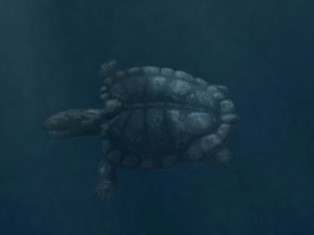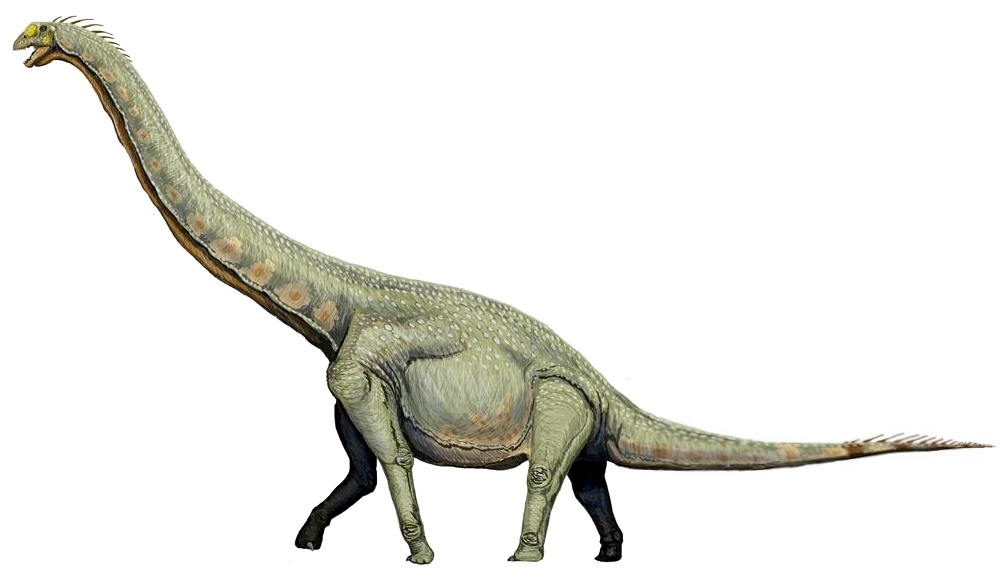|
Sinemydidae
Sinemydidae is an extinct family of turtles from Cretaceous to Paleocene deposits in Asia and North America. Their exact position is engimatic, they have alternatively been considered stem-group cryptodires, but also "crownward stem-turtles" alongside Macrobaenidae, Paracryptodira, Xinjiangchelyidae, Thalassochelydia and Sandownidae outside of crown Testudines. Genera *'' Dracochelys'' Lianmugin Formation, China, Early Cretaceous (Aptian-Albian) *'' Hongkongochelys'' Upper Shaximiao Formation, China, Middle-Late Jurassic *'' Jeholochelys'' Jiufotang Formation, China, Early Cretaceous (Aptian) *'' Liaochelys'' Jiufotang Formation, China, Early Cretaceous (Aptian) *'' Manchurochelys'' Yixian Formation, China, Early Cretaceous (Aptian) *'' Ordosemys'' **''O''. ''leios'' Luohandong Formation, China, Early Cretaceous **''O''. ''liaoxiensis'' Chengzihe Formation, China, Early Cretaceous (Aptian) **''O''. ''brinkmania'' Lianmugin Formation, China, Early Cretaceous (Aptian-Albian) * ... [...More Info...] [...Related Items...] OR: [Wikipedia] [Google] [Baidu] |
Cryptodira
The Cryptodira ('' el, hidden neck'') are a suborder of Testudines that includes most living tortoises and turtles. Cryptodira differ from Pleurodira (side-necked turtles) in that they lower their necks and pull the heads straight back into the shells, instead of folding their necks sideways along the body under the shells' marginals. They include among their species freshwater turtles, snapping turtles, tortoises, softshell turtles, and sea turtles. Neck retraction The Cryptodira are characterized by retraction of the head in the vertical plane, which permits for primarily vertical movements and restricted lateral movements outside of the shell. These motions are largely due to the morphology and arrangement of cervical vertebrae. In all recent turtles, the cervical column consists of nine joints and eight vertebrae. Compared to the narrow vertebrae and the closely positioned zygapophyses of the pleurodires, the cryptodires’ vertebrae take on the opposite shape. Their ce ... [...More Info...] [...Related Items...] OR: [Wikipedia] [Google] [Baidu] |
Manchurochelys
''Manchurochelys'' is an extinct genus of turtle in the order Paracryptodira. It existed during the early Cretaceous of what is now northeast China. It has been found in the Jianshangou Bed of West Liaoning's Yixian Formation. However, it is a rarely found fossil. ''Manchurochelys'' was first named by Endo and Shikama in 1942, and contains the single species, ''M. manchoukuoensis'' (sometimes misspelled ''M. manchouensis''). A second species, ''M. liaoxensis'', was named in 1995 but was later shown to be a species of '' Ordosemys''.Tong, H., Ji, S. and Ji, Q. (2004).''Ordosemys'' (Testudines, Cryptodira) from the Yixian Formation of Liaoning Province, northeastern China: new specimens and systematic revision. American Museum Novitates, 3438: 1-20. ''Manchurochelys'' was a relative of the modern-day snapping turtle. It has been occasionally placed in the family Sinemydidae, although it is said to more likely belong in the family Macrobaenidae. [...More Info...] [...Related Items...] OR: [Wikipedia] [Google] [Baidu] |
Macrobaenidae
Macrobaenidae is an extinct family of turtles, known from the Early Cretaceous to Paleogene of Laurasia. Their relationships to other turtles and whether or not they form a monophlyletic group are controversial. They are typically interpreted as stem or crown group cryptodires, but some more recent analyses have found them to lie outside crown group Testudines. Macrobaenids can be distinguished from other testudinatans by the presence of a carotid fenestra, cruciform plastron with strap-like epiplastra, and a lack of extragulars. Genera *''Anatolemys'' Central Asia, Late Cretaceous ( Khodzhakul Formation, Uzbekistan, Cenomanian, Bissekty Formation, Uzbekistan, Turonian, Bostobe Formation, Kazakhstan, Santonian Yalovach Formation, Tajikistan, Santonian) *'' Appalachemys'' Mooreville Chalk, Alabama, Late Cretaceous (Santonian–Campanian) *'' Asiachelys'' Khulsangol Formation, Mongolia, Early Cretaceous (Albian) *'' Aurorachelys'' Kanguk Formation, Canada,Turonian *'' Cha ... [...More Info...] [...Related Items...] OR: [Wikipedia] [Google] [Baidu] |
Sandownidae
Sandownidae is a family of extinct marine turtles from the Cretaceous and Paleogene distributed around the Atlantic Ocean and adjacent areas. The family is defined as all taxa closer to the type genus '' Sandownia'' than to ''Pelomedusa'', '' Testudo'', ''Solnhofia'', ''Eurysternum'', ''Plesiochelys'', ''Thalassemys'' or '' Protostega'', a definition that encompasses the previous concept of the clade while also excluding it from being synonymous with other clades of modern or extinct marine turtles. Sandownidae may be within the larger clade Angolachelonia, defined as inclusive of ''Angolachelys'' and ''Solnhofia'', sister to the entirely Late Jurassic marine group Thalassochelydia, although the concepts of the clades may shift with further phylogenetic analysis. Genera * '' Sandownia'' Meylan et al. 2000 Atherfield Clay Formation, England, Early Cretaceous (Aptian) * '' Brachyopsemys'' Tong and Meylan 2013 Ouled Abdoun Basin, Morocco, Paleocene (Danian) * ''Angolachelys'' Mate ... [...More Info...] [...Related Items...] OR: [Wikipedia] [Google] [Baidu] |
Berriasian
In the geological timescale, the Berriasian is an age/stage of the Early/Lower Cretaceous. It is the oldest subdivision in the entire Cretaceous. It has been taken to span the time between 145.0 ± 4.0 Ma and 139.8 ± 3.0 Ma (million years ago). The Berriasian succeeds the Tithonian (part of the Jurassic) and precedes the Valanginian. Stratigraphic definition The Berriasian Stage was introduced in scientific literature by Henri Coquand in 1869. It is named after the village of Berrias in the Ardèche department of France. The largely non-marine English Purbeck Formation is in part of Berriasian age.In fact, the first rocks to be described of this age were the beds of the English Purbeck Formation, named as the Purbeckian by Alexandre Brongniart in 1829 following description by Henry De la Beche, William Buckland, Thomas Webster and William Henry Fitton. The base of the Berriasian, which is also the base of the Cretaceous System, has traditionally been placed at the first ap ... [...More Info...] [...Related Items...] OR: [Wikipedia] [Google] [Baidu] |
Mengyin Formation
The Meng-Yin or Mengyin Formation () is a geological formation in Shandong, China, whose strata date back to the Berriasian and Valanginian stages of the Early Cretaceous.Mengyin Formation at Fossilworks.orgWilson & Upchurch, 2009 Dinosaur remains are among the fossils that have been recovered from the formation.Weishampel et al., 2004, "Dinosaur distribution (Late Jurassic, Asia).", pp.550–552 The type material for the titanosauriform dinosaur '''' was excavated at this formati ... [...More Info...] [...Related Items...] OR: [Wikipedia] [Google] [Baidu] |
Hauterivian
The Hauterivian is, in the geologic timescale, an age in the Early Cretaceous Epoch or a stage in the Lower Cretaceous Series. It spans the time between 132.9 ± 2 Ma and 129.4 ± 1.5 Ma (million years ago). The Hauterivian is preceded by the Valanginian and succeeded by the Barremian.See Gradstein ''et al.'' (2004) for a detailed geologic timescale Stratigraphic definitions The Hauterivian was introduced in scientific literature by Swiss geologist Eugène Renevier in 1873. It is named after the Swiss town of Hauterive at the shore of Lake Neuchâtel. The base of the Hauterivian is defined as the place in the stratigraphic column where the ammonite genus ''Acanthodiscus'' first appears. A reference profile for the base (a GSSP) was officially ratified by the International Union of Geological Sciences in December of 2019, and is placed in La Charce, France. The top of the Hauterivian (the base of the Barremian) is at the first appearance of ammonite species ''Spitidiscus hugii'' ... [...More Info...] [...Related Items...] OR: [Wikipedia] [Google] [Baidu] |
Valanginian
In the geologic timescale, the Valanginian is an age or stage of the Early or Lower Cretaceous. It spans between 139.8 ± 3.0 Ma and 132.9 ± 2.0 Ma (million years ago). The Valanginian Stage succeeds the Berriasian Stage of the Lower Cretaceous and precedes the Hauterivian Stage of the Lower Cretaceous. Stratigraphic definitions The Valanginian was first described and named by Édouard Desor in 1853. It is named after Valangin Valangin () is a former municipality in the district of Val-de-Ruz in the canton of Neuchâtel in Switzerland. On 1 January 2021 the former municipalities of Corcelles-Cormondrèche, Peseux and Valangin merged into the municipality of Neuchâ ..., a small town north of Neuchâtel in the Jura Mountains of Switzerland. The base of the Valanginian is at the first appearance of Calpionellidae, calpionellid species ''Calpionellites darderi'' in the stratigraphic column. A global reference section (a GSSP) had in 2009 not yet been appointed. The top o ... [...More Info...] [...Related Items...] OR: [Wikipedia] [Google] [Baidu] |


